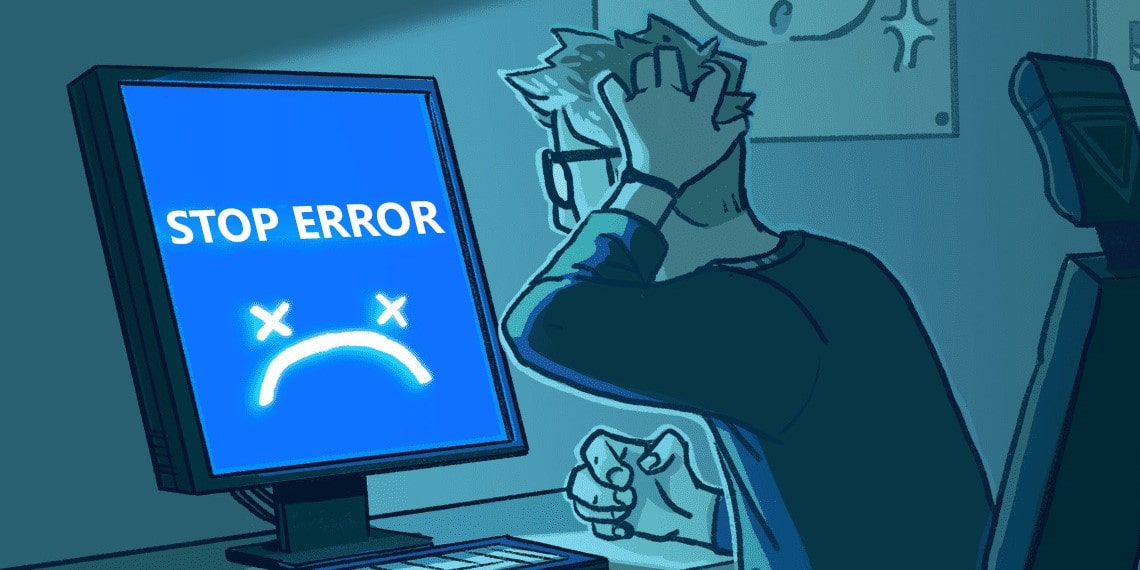Are you having trouble with your laptop’s blue screen of death? Don’t worry, the solution may be simpler than you think! In this article, we’ll walk through a step-by-step guide on how to quickly and easily troubleshoot your laptop’s blue screen errors. Read on to find out more!
Table of Contents
What Causes Blue Screen Errors in Laptops?
One of the most frustrating things that can happen to a laptop user is the dreaded blue screen of death. Although a blue screen may indicate a serious problem, in many cases it is caused by a relatively simple issue that can be fixed without resorting to drastic measures.
There are several potential causes for blue screen error in laptops. One common cause is outdated or corrupted device drivers. Drivers are the software that allows your operating system to communicate with your hardware. When they become obsolete or corrupt, they can cause all sorts of problems, including blue screens. Another common cause of blue screens is hardware failure. This can be anything from a failing hard drive to faulty RAM.
If you suspect that your laptop’s blue screen problem is being caused by outdated or corrupt drivers, you can try updating them. To do this, you’ll need to identify the make and model of your laptop’s chipset and then visit the website of the manufacturer to download and install the latest drivers. If you’re not sure how to do this, you can use a driver update tool like Driver Detective (links below).
If updating your drivers doesn’t fix the problem, then it’s likely that hardware is to blame. In this case, you’ll need to take your laptop to a qualified technician for diagnosis and repair. If you are also struggling with Pii errors in mail, then you can visit online websites for the same.

How to Troubleshoot the Issue?
If you’re seeing a blue screen on your laptop, there are a few different ways that you can troubleshoot the issue.
First, try restarting your laptop. If that doesn’t work, try running a virus scan or updating your drivers.
If those two things don’t fix the problem, then you may need to contact a computer technician for further assistance.
Common Solutions to Fix Blue Screen Error
If you’re seeing blue screens on your laptop, it’s likely that there’s a problem with your hardware or software. Here are some common solutions to fix blue screens:
- Restart your laptop. This is often the first and simplest solution to blue screen problems.
- Update your drivers. Outdated drivers can cause all sorts of problems, including blue screens. Make sure you’re running the latest versions of your drivers by visiting your manufacturer’s website or using a driver update tool like DriverBoost.
- Run a virus scan. Viruses and other malware can cause blue screens and other problems. Use an antivirus program like McAfee or Norton to run a full scan of your laptop and remove any malicious software.
- Check for hardware problems. If you’re still getting blue screens after trying the above solutions, there may be a problem with your hardware. Try running a diagnostic tool like Hardware Diagnostics from Dell to check for hardware issues.

How to Update Your Drivers Quickly & Easily?
If you’re seeing the blue screen of death on your laptop, it could be due to outdated drivers. Updating your drivers is a quick and easy way to troubleshoot blue screen problems.
There are two ways to update your drivers: manually or automatically.
To update your drivers manually, you’ll need to find the correct driver for your device and then download and install it yourself. This can be time-consuming and difficult, so we recommend using a driver update tool such as Driver Easy.
Driver Easy will scan your computer for outdated drivers and then download and install the latest versions automatically. This is much easier than manually updating your drivers, and it ensures that you always have the latest versions installed.
Once you’ve updated your drivers, restart your laptop and see if the blue screen problem has gone away. If it hasn’t, there may be another issue causing the blue screens, such as a hardware problem.
Tips for Preventing Further Issues With Your System
If you’ve recently experienced a blue screen error on your laptop, there are a few things you can do to prevent further issues. First, make sure that all of your drivers are up to date. You can do this by visiting the manufacturer’s website and checking for updates. If you’re not sure how to do this, you can use a driver update tool.
Next, run a virus scan on your system. This will help to remove any malicious software that may be causing blue screen errors. If you don’t have anti-virus software installed on your computer, you can download and install it from the internet.
Finally, if you continue to experience blue screen errors, it’s important to contact a computer technician for assistance. They will be able to help you troubleshoot the issue and get your computer running properly again.
Conclusion
Troubleshooting blue screen problems in your laptop can be a daunting task, but it is not impossible. With the right tools and knowledge, you can quickly diagnose and repair any issues that may be causing your laptop to experience Blue Screen of Death errors. We hope this article has given you the tips and advice necessary to troubleshoot these types of problems on your own. Good luck!





